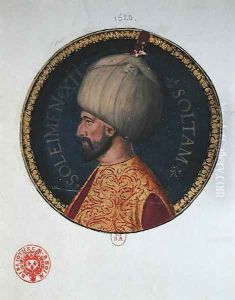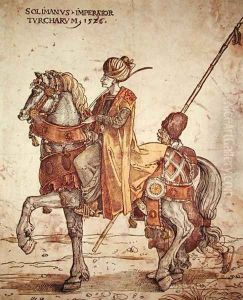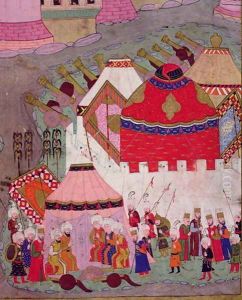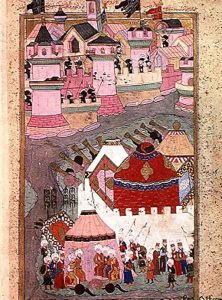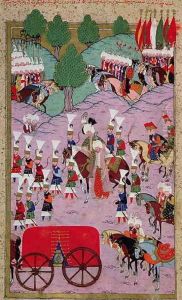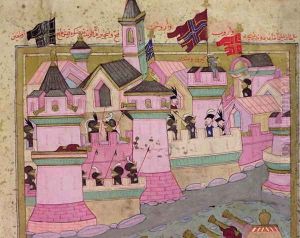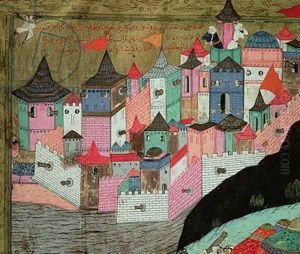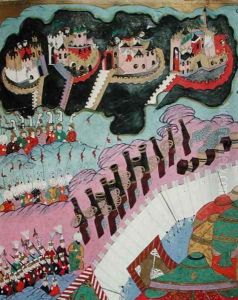I the Magnificent Suleyman Paintings
Suleiman I, commonly known as Suleiman the Magnificent in the West and Kanuni Sultan Süleyman (The Lawgiver Suleiman) in his realm, was the tenth and longest-reigning Sultan of the Ottoman Empire, from 1520 to his death in 1566. Although Suleiman is not primarily known as an artist but as a sultan, his era is known for a flourishing of the Ottoman arts, particularly in the fields of architecture, literature, and calligraphy, as well as the vast expansion of the empire.
Suleiman was born on November 6, 1494, in Trabzon, along the coast of the Black Sea, to Sultan Selim I and his consort Hafsa Sultan. As a young prince, Suleiman received an extensive education in the Ottoman palace, learning about the military, administrative, and artistic aspects of governance. He was also trained in the art of calligraphy, an esteemed skill in the Ottoman court, and he developed a keen interest in poetry and literature.
Upon ascending to the throne after his father's death, Suleiman embarked on major military campaigns that expanded Ottoman dominion into Europe, North Africa, and the Middle East. His reign marked the pinnacle of Ottoman power. Suleiman's patronage of the arts was an essential aspect of his sultanate. He commissioned many architectural projects, including the Suleymaniye Mosque in Istanbul, which is considered one of the masterpieces of Ottoman architecture, designed by the famous architect Mimar Sinan.
Moreover, Suleiman himself was a poet, writing under the pseudonym Muhibbi, and his diwans (collections of poetry) contribute to Turkish literature. He encouraged the development of Ottoman arts and culture, leading to a period known as the Sultanate of Women, where the women of his harem, particularly Hurrem Sultan, also played a significant role in the cultural and political life of the empire.
Suleiman's legacy is not solely based on his military conquests but also includes significant legal and administrative reforms that earned him the name 'The Lawgiver.' These reforms improved the efficiency and fairness of the Ottoman legal system. His cultural patronage and personal artistic contributions helped to shape the artistic achievements of the Ottoman Golden Age, leaving a lasting impression on the empire's cultural history.
Suleiman died on September 7, 1566, while on campaign in Szigetvár, and his body was returned to Istanbul for burial. His influence on the arts, legal system, and the expansion of the Ottoman Empire have made him a prominent figure in both Eastern and Western histories.
